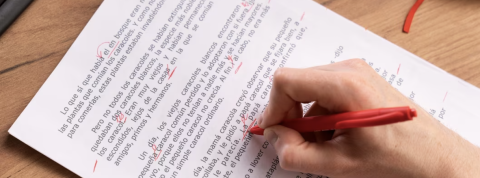
APA Style, a practical application guide
The APA (American Psychological Association) Style and its application are topics that are discussed from school to university, and they are used to format a text, so that it is understandable, efficient and clear to the reader.
The purpose of this set of rules is to provide standards that unify at an international level not only the writing, but also the presentation of written documents. Due to their importance, they are used in the academic and scientific fields, and are required in educational institutions and journals.
The following is a basic guide to the use of these rules, according to their seventh and most recent edition:
- Paper: The size should be 21.59×27.94 centimeters.
- Font: Times New Roman, size 12; Georgia, 11 point; Calibri, 11 point; Arial, 11 point; Lucida Sans Unicode, 10 point.
- Line spacing: 2.0 format and text aligned to the left, without justification.
- No spaces should be used between paragraphs.
- Margins: 2.54 cm/1 space.
- Indents: 5 spaces at the beginning of each paragraph.
- Tables: They should not have lines separating cells.
- Writing: Must be in the third person.
- Header and page number: Must be in the document.
- Title page: Must have the title of the project, author’s name, educational institution, subject, teacher’s name and date of presentation, in that order respectively.
- Titles: They should not be written in capital letters.
- Level 1: It is used with the heading in bold and centered.
- Level 2: Must be left-aligned and in bold.
- Level 3: The paragraph heading should be indented, bold and with a period.
- Level 4: Paragraph heading should be indented, italicized and period at the end of the line.
- Level 5: The paragraph heading should be indented, should not be bold, and italics and period should be used.
Quotations:
- Textual: It is when it is taken textually. If it is less than 40 words, the text must be between quotation marks and in italics, while when it is more, it must be written separately and without quotation marks.
- Based on the text: The quotation, the author’s last name, the year of publication and the page where it is found are written. Everything must be in parentheses and followed by a period.
- Paraphrasing: It is when the author uses someone else’s idea in his/her own words. It should be cited with last name and year of publication in parentheses, followed by a period.
- Bibliographical references: They should be on a page before the tables, figures and appendices, but after the body of the work with the title References in bold and centered. The spacing should be double-spaced and all citations should be described here.
- In addition, URLs should redirect to the web page, be indented 0.5 inches, and up to 20 authors may be included in a single citation.
- Tables and figures: The title should be clear and brief, only lines should be used to differentiate categories and they should be numbered with Arabic numerals. As for figures, the number should be written at the beginning and in bold within the note below the graph.
- Abstract: It should be on a single page, the title “Abstract” should be centered, the text that follows should be between 150 to 250 words without indentation.
The characteristics of the APA Style allow an academic paper to have an order, and its application facilitates the understanding of it, so if it is possible to establish or preset them in Word, it will be much easier, practical and faster for the author of the document.